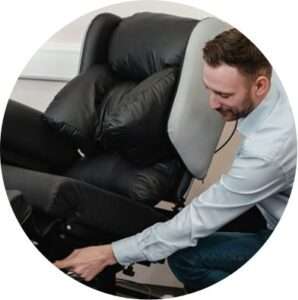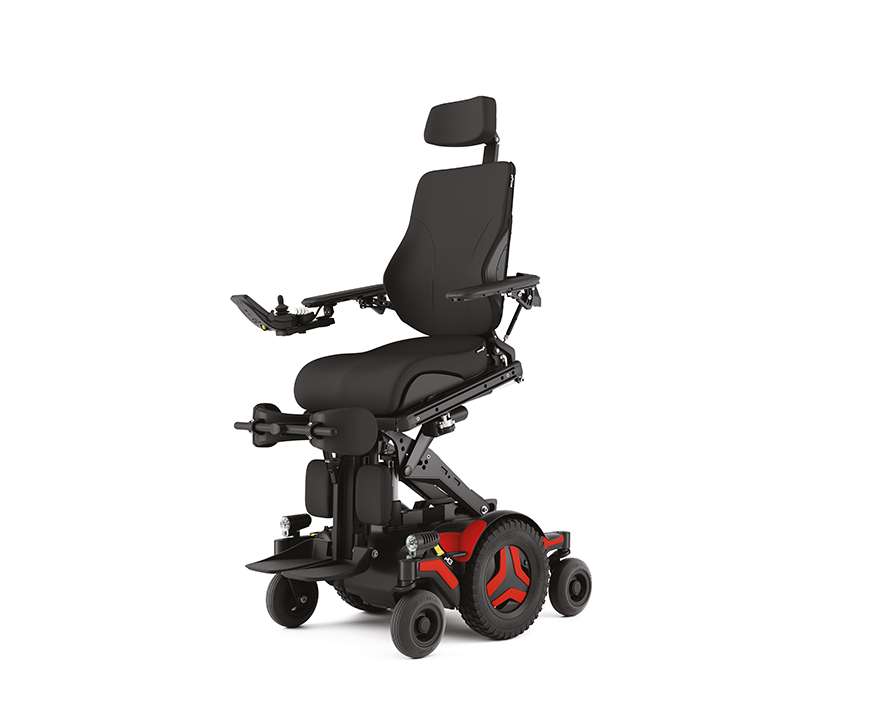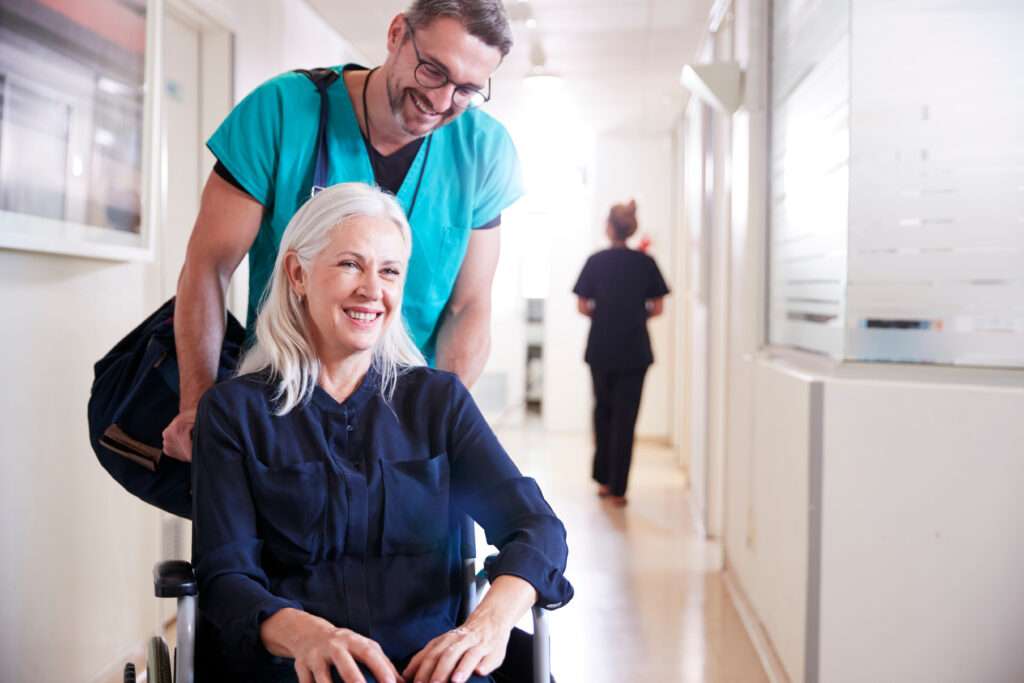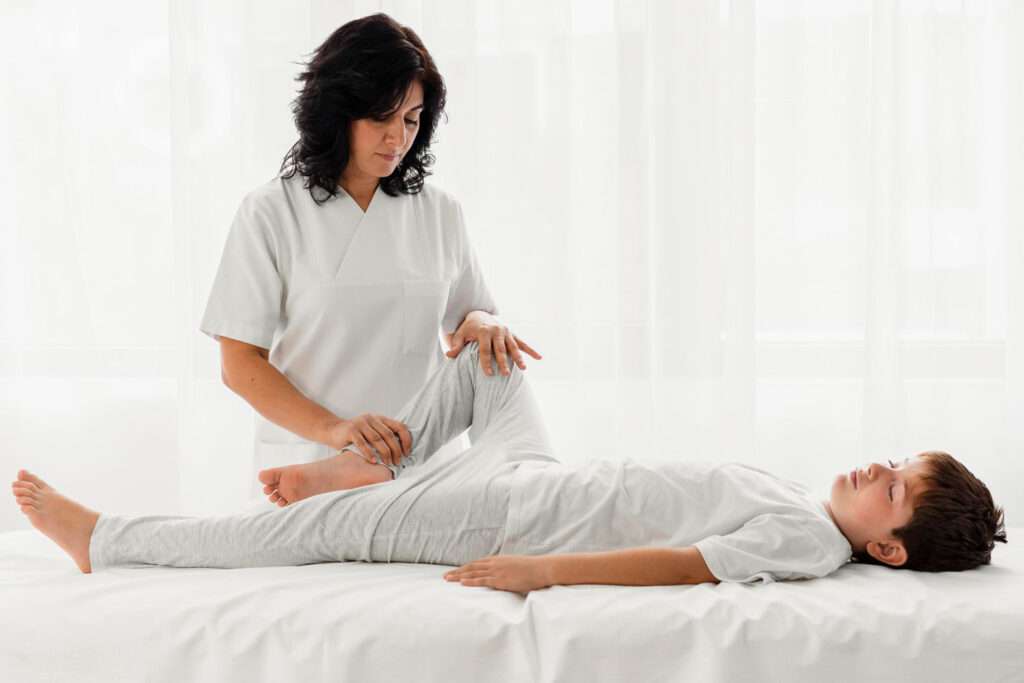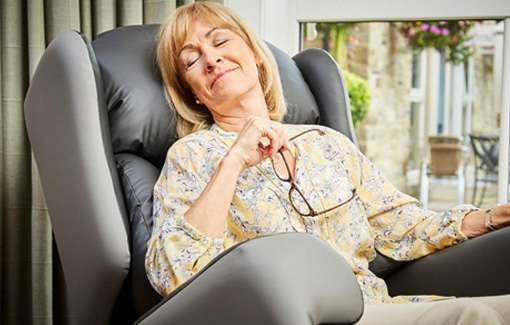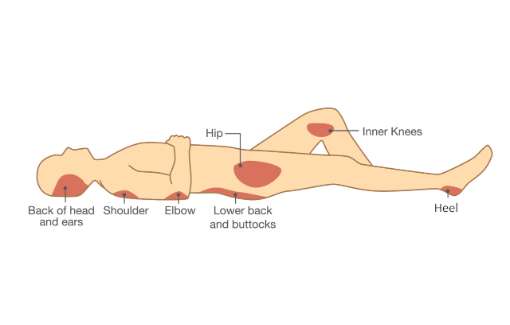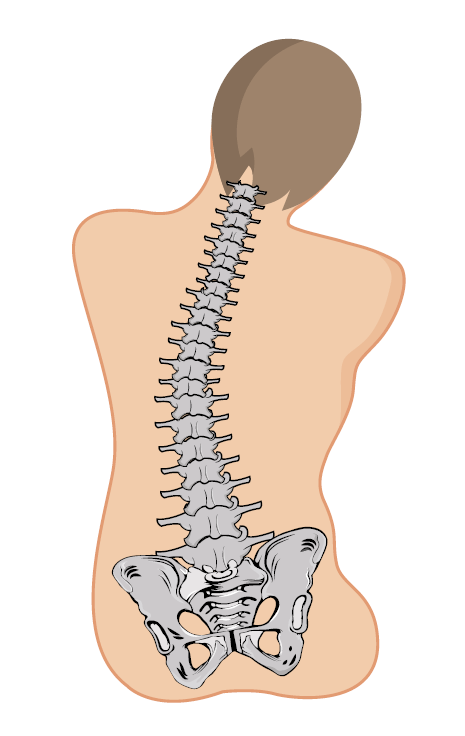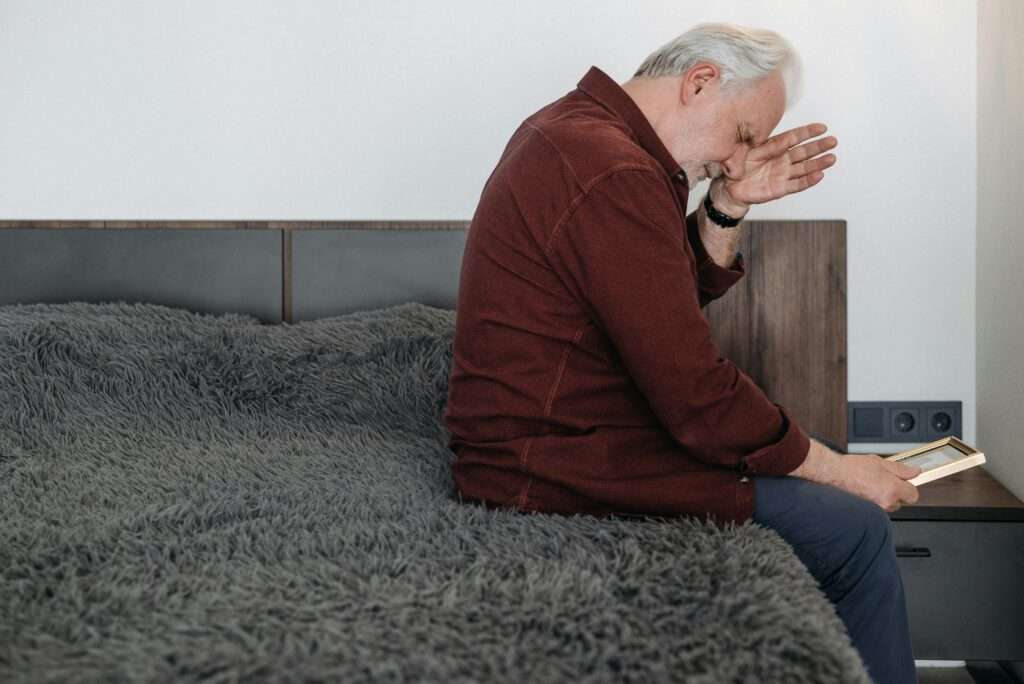Standing (or stand-up) wheelchairs and powerchairs bring immense health benefits to disabled individuals, not just from ease of accessibility, but through the many benefits that standing brings to the body.
Jump straight to...
Powerchair users who need assistance standing find that the stand-assist function on the Permobil chairs gives them so much freedom, making transfers far easier and giving them the ability to move and reposition themselves.
The stand-assist function provides an array of health benefits, as described below. In this article we explain the top ten benefits of the stand-up function for powerchairs users:
- Prevents Joint and Muscle Contractures
- Supports Bone Health and Reduces the Risk of Osteoporosis
- Reduces the Risk of Pressure Sores
- Improves Range of Motion
- Builds Core Strength and Improves Head Control
- Enhances Muscle Memory and Motor Skills
- Boosts Circulation and Respiratory Health
- Promotes Digestive and Renal Health
- Enhances Emotional and Social Well-Being
- Encourages Early Development in Children
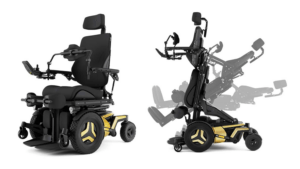
Permobil F5 Corpus Standing Wheelchair VS Standup Corpus
Benefits of Standing Powerchairs
1. Prevents Joint and Muscle Contractures
Standing helps keep muscle tone flexible, preventing muscles tightening or contracting from constantly being in a sitting position.
This is particularly good for muscles around the ankles, knees and hips that determine sitting posture.
Contractures can be more common with genetic disorders such as Muscular Dystrophy, and often lead to other complications such as pressure sores and postural problems.
2. Supports Bone Health and Reduces the Risk of Osteoporosis
Supporting your own body weight helps to strengthen the bones and increase bone density. This reduces the risk of osteoporosis as the bones age, a condition that weakens the bones and makes them brittle.
Switching to a standing posture on a regular basis helps straighten the spine, extends the trunk and prevents postural deformities such as kyphosis or windswept hip, all improving skeletal health.
3. Reduces the Risk of Pressure Sores
Relieving the build-up of pressure is a massive benefit for stand-assist users. Pressure ulcers are injuries to the skin tissue caused by the build-up of pressure over a long period for time, and can get worse if left untreated. Having the right positioning and level of pressure relief in the chair is the first priority, but the standing function has the major benefit of being able to redistribute body weight through the feet and relieve pressure on the sacrum and thighs.
4. Improves Range of Motion
As well as improving muscle health as outlined in point 1, using the standing function increase the range of movement across the body as a whole. Key joints such as the hip, spine, knees and ankles can all be kept in movement, which is important to keep the body flexible and maintain the body’s natural range of motion. This helps the user maintain their independence with daily activities such as cooking, washing and dressing.
The standing motion can also assist with basic limb exercises that the user may do to improve their muscle health.
5. Builds Core Strength and Improves Head Control
Standing improves core strength by maintaining balance, improving overall stability and head control. This gradual conditioning helps to increase strength and mobility over time.
6. Enhances Muscle Memory and Motor Skills
Standing promotes muscle memory and retains the use of motor skills, from the movements used in changing to a standing position. When repeated over time this can lead to standing unaided, and even taking small steps as the user’s coordination and balance improves.
7. Boosts Circulation and Respiratory Health
Changing posture by standing helps to stimulate blood circulation. As well as improving respiratory and heart health, this reduces the risk of thrombosis and swelling in the lower limbs from stagnated blood flow.
8. Promotes Digestive and Renal Health
Being in an upright position aids digestion and improves bladder health. This contributes to a healthy digestive and renal system, further enhancing well-being.
9. Enhances Emotional and Social Well-Being
Improved emotional health is one of the more indirect consequences of the standing function, but far-reaching in its positive effects.
The standing function increases overall independence, allowing powerchair users to interact with others socially at eye-level, leading to improved confidence and self-esteem. Enabling social connection and better social mobility in this way can have a profound effect on overall levels of wellbeing and happiness.
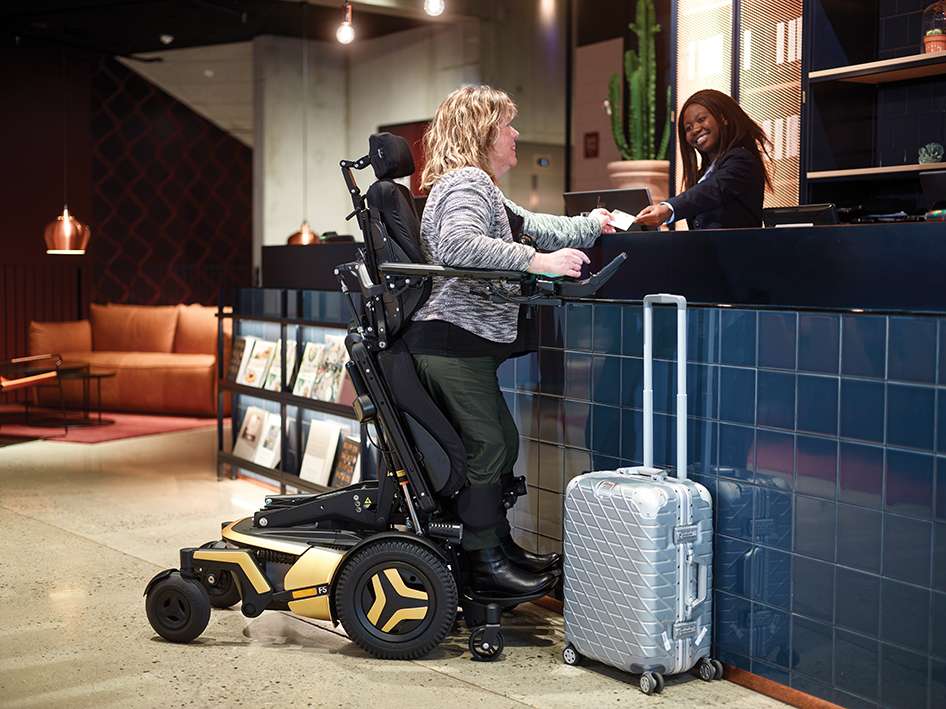
Vertical Stand
10. Encourages Early Development in Children
Early intervention with standing aids helps children develop strength and flexibility as they grow.
All these benefits can be summarised into these overall factors that contribute to an enhanced quality of life for the client:
Promoting Movement
Increasing the client’s range of motion across different joints improves muscle health and increases the passive motion in the lower limbs. This increases the client’s autonomy and helps them perform more self-care tasks.
Greater Independence
The elevation to standing position while using the chair opens up so many benefits, from improved reach to easier access to shelves and workstations.
Social Mobility and Inclusion
The increased social participation from eye-level contact opens up so many possibilities to the powerchair user, boosting their confidence and social interactions.
Improved Mental Health and Wellbeing
The positive impact on clients’ mental health and wellbeing is well recounted from the improvements the standing function brings to so many aspects of daily life.

Vertical Stand
For further clinical advice about the benefits of the powered stand function, read our previous article: Clinical Guide for Powered Standing Wheelchairs – Vivid Care
Conclusion
Standing wheelchairs and powerchairs do more than provide mobility — they empower users by improving physical, emotional, and social well-being. The innovative standing function helps maintain better posture, supports bone health, reduces the risk of health complications, and fosters greater independence in daily life. By elevating users physically and mentally, stand-up powerchairs unlock possibilities that go beyond traditional mobility solutions, creating a path towards a healthier and more fulfilling lifestyle.
FAQs
Q: What is a standing wheelchair?
A: A standing wheelchair, also known as a stand-up wheelchair, is a mobility device that allows the user to transition from a seated to a standing position, providing numerous health and lifestyle benefits.
Q: What are the main benefits of using a standing powerchair?
A: Standing powerchairs help prevent joint contractures, support bone health, reduce the risk of pressure sores, improve range of motion, build core strength, enhance circulation, and promote mental well-being, among many other advantages.
Q: Can using a stand-up wheelchair improve bone health?
A: Yes, regular standing helps to strengthen bones and increase bone density, which reduces the risk of osteoporosis and improves overall skeletal health.
Q: Are standing powerchairs suitable for children?
A: Absolutely. Early use of standing powerchairs can support physical development, strength, and flexibility in children, promoting healthy growth.
Q: How does a standing wheelchair improve social interactions?
A: By elevating the user to an eye-level position, standing wheelchairs enable better social interactions, boosting confidence and social inclusion.
Q: Is it difficult to operate a stand-up wheelchair?
A: Modern stand-up wheelchairs are designed for ease of use, often featuring intuitive controls and support systems to help users transition smoothly between sitting and standing positions.
Q: How do standing powerchairs impact mental health?
A: The enhanced independence, social interactions, and physical improvements provided by stand-up wheelchairs often lead to improved mental health, increased confidence, and overall well-being.
For more information on choosing the right standing wheelchair, consult our in-house mobility specialists.
Get Expert Advice



